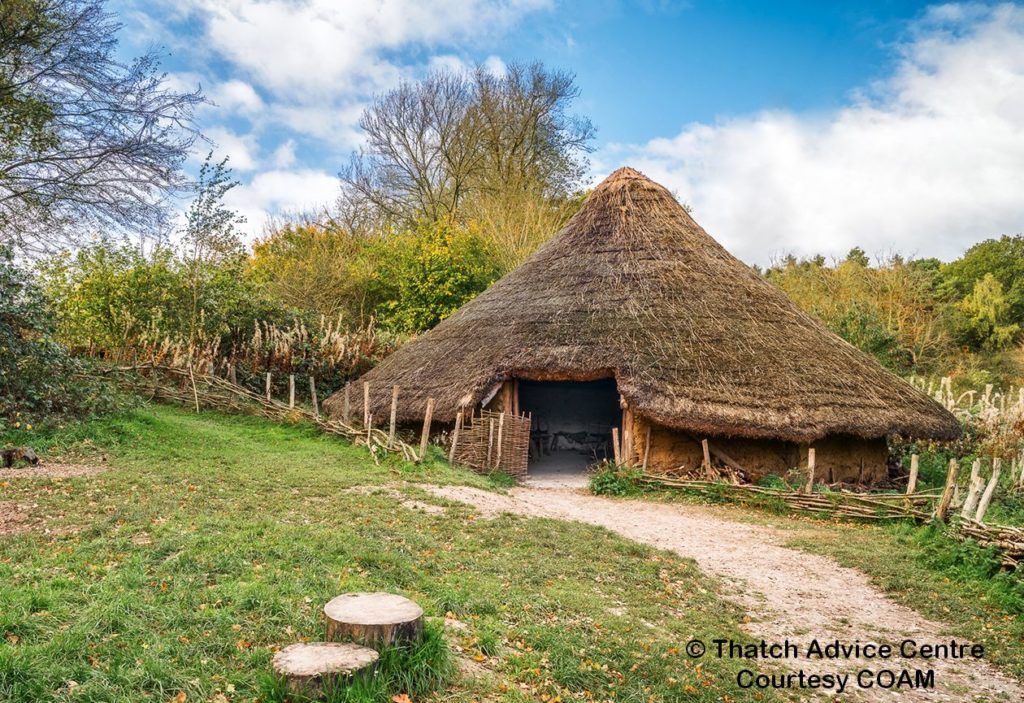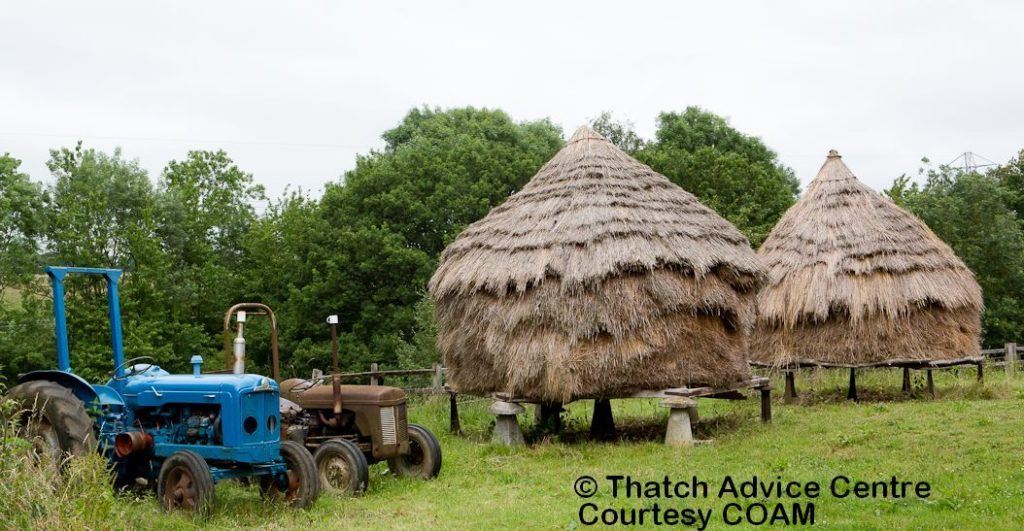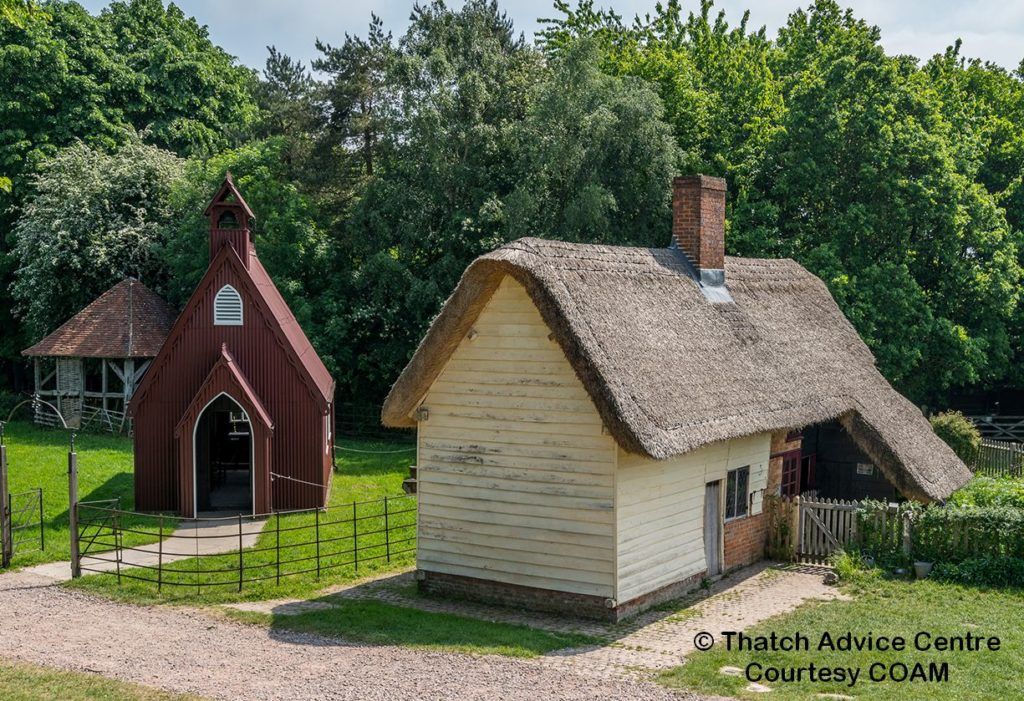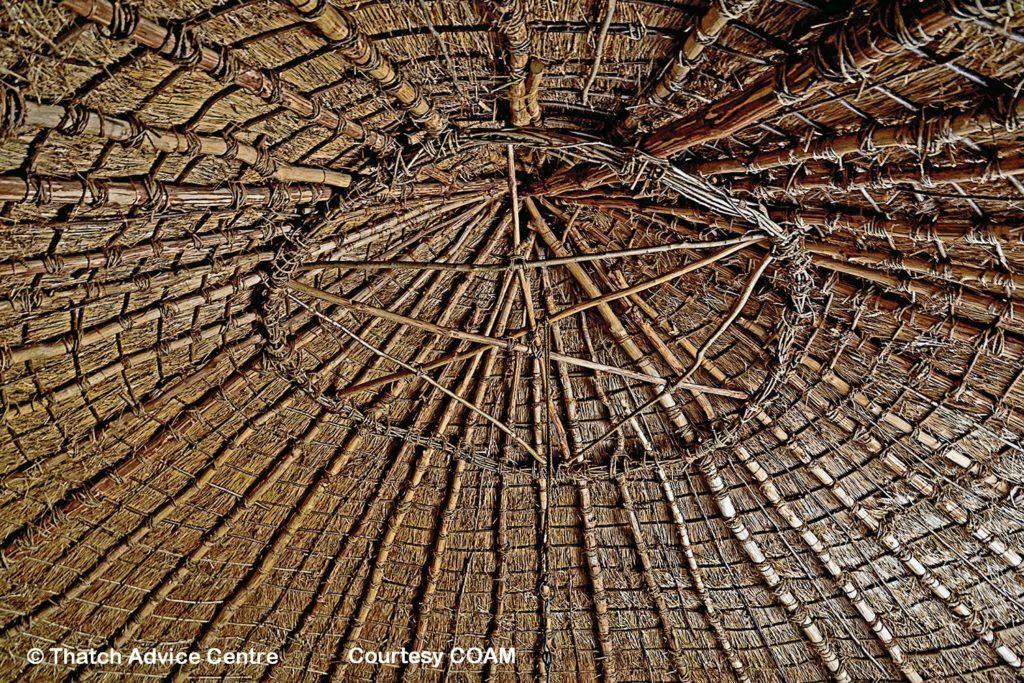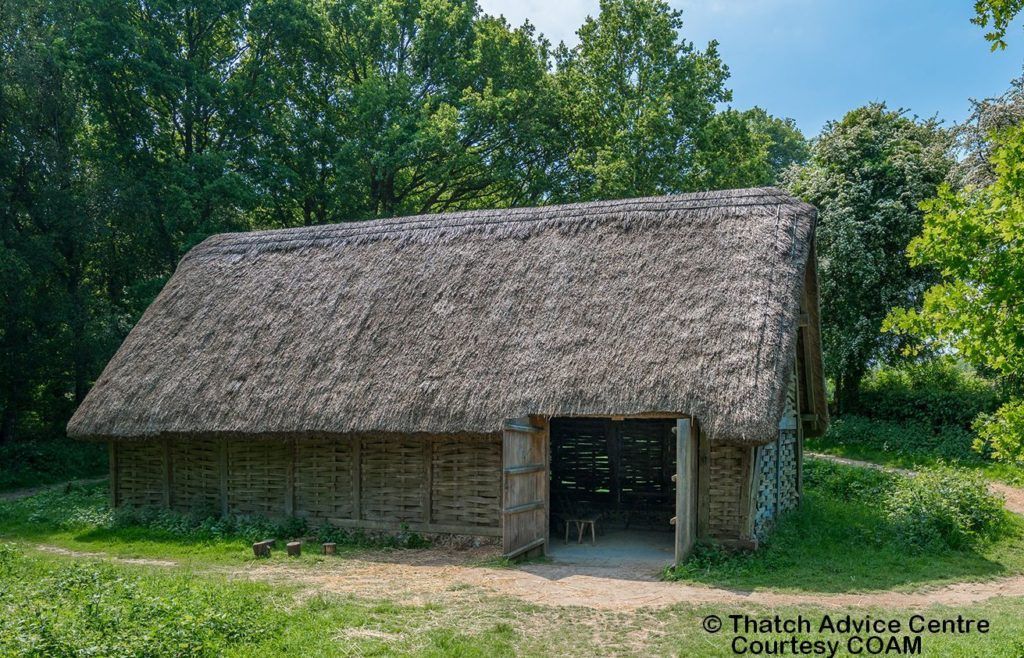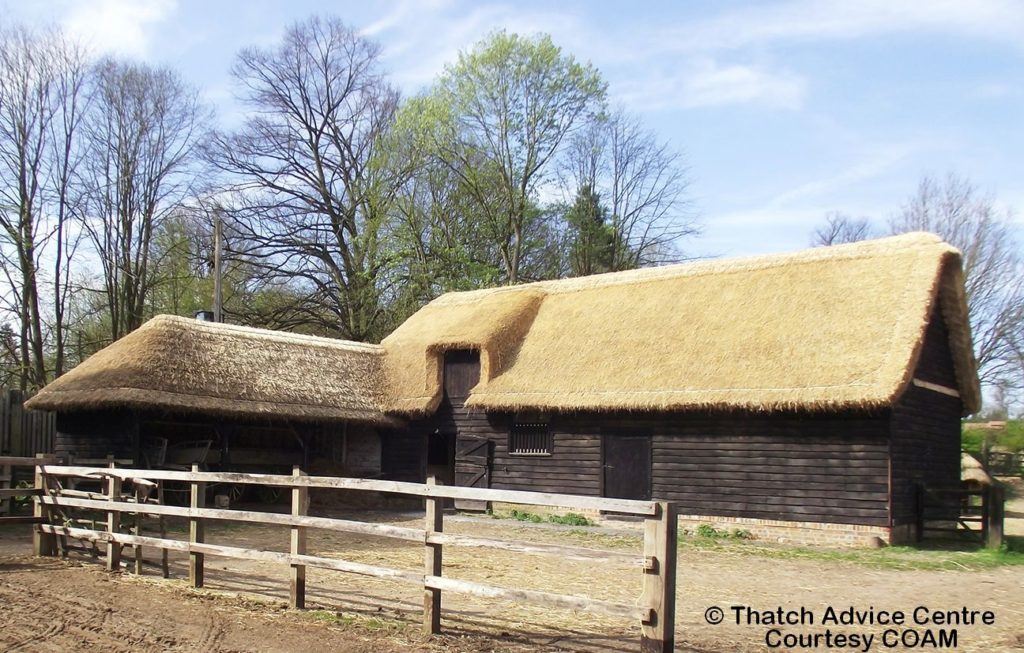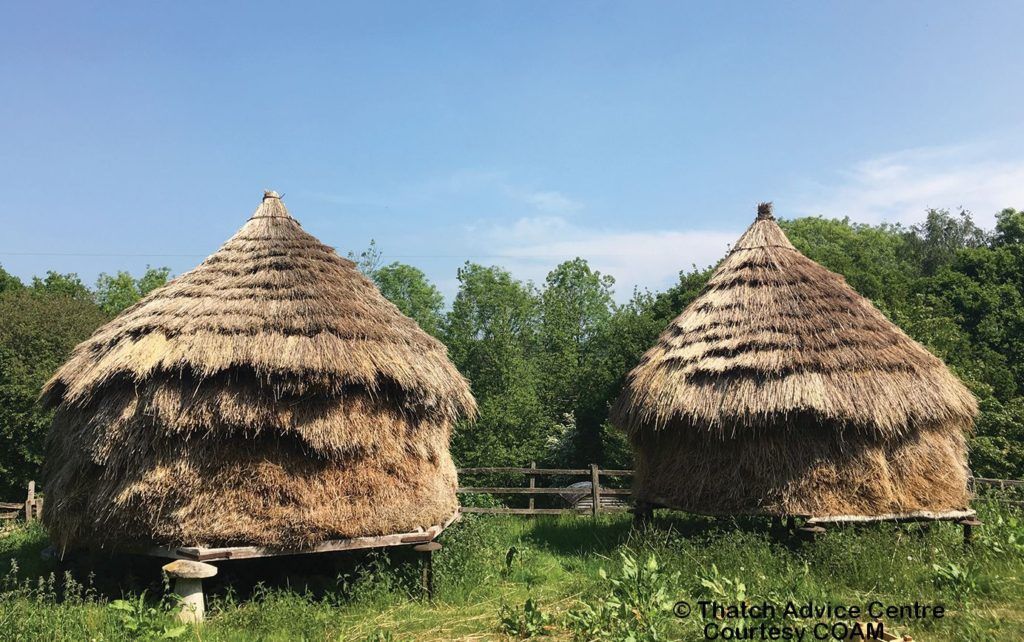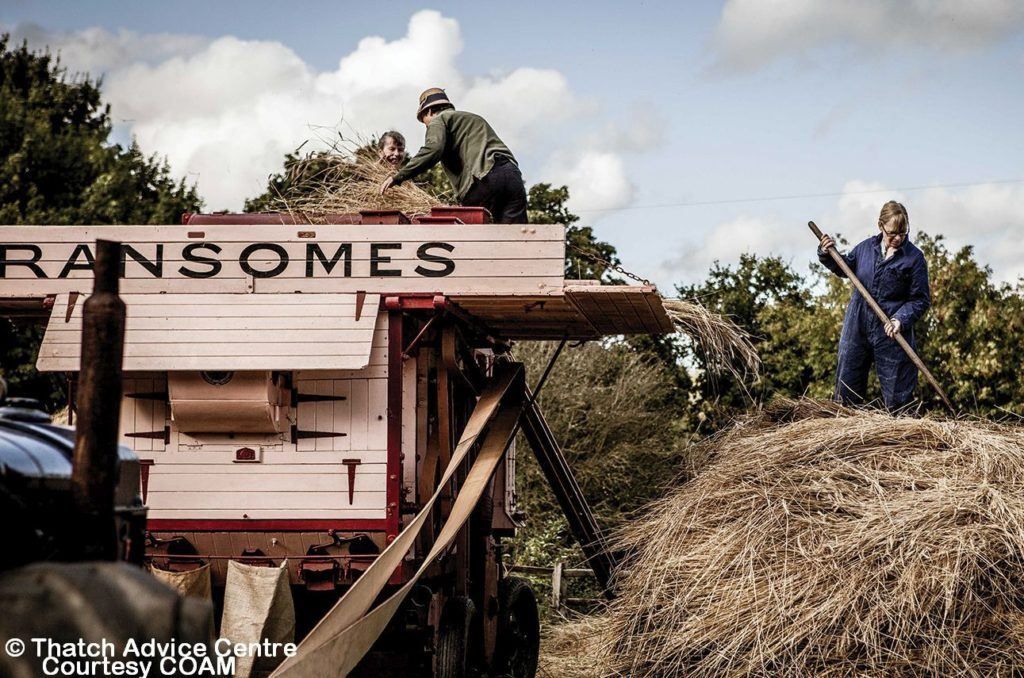We are always pleased to make friends on Social Media with people and places that have interesting thatch. Another such association is the fascinating Chiltern Open Air Museum (COAM), based in Buckinghamshire, just outside the M25. Their team were happy to send us information on their buildings, events and several lovely pictures.
Read on to find out about the mission of the museum, the variety of buildings on display and events held on this wonderful 45 acre site. There are many thatched buildings as well as working farm machinery including that used to gather and process the thatching materials.
About Chiltern Open Air Museum
“Chiltern Open Air Museum is an outdoor Museum of rescued and reconstructed vernacular buildings in Chalfont St Giles, Buckinghamshire. The Museum was founded in 1976 and has now rebuilt 37 historic buildings to date on its 45 acre site which is set within traditional Chilterns countryside. The Museum is a charity set up to protect and record the heritage of the Chilterns and the traditions and stories of the people who inhabited them. The majority of the building reconstruction at the Museum has been done by volunteers and Buildings Manager, John Hyde-Trutch, who has worked at the Museum for nearly 40 years!”
Chiltern Open Air Museum on Screen
“The Museum’s close location to the M25 and filming studios makes us a popular venue for filming. Arborfield barn has appeared in lots and was used in filming the movie Mary Queen of Scots, the fictional scene where the two Queens meet.”
The Thatched Buildings at Chiltern Open Air Museum
“The Museum’s collection of buildings includes a number of barns, cottages, prefabricated buildings, farm buildings, a Victorian toll house, Blacksmith’s forge, furniture factory, earth cottage and replica Iron Age roundhouse.”
Leagrave Cottages
“Within the Museum’s collection are two small cottages from Leagrave. They are made from timber, one side is clad in wood and the other is brick and plaster. The roof was rethatched with long straw in 2016, by two master thatchers who, during the course of their work at the Museum, spent time providing basic thatching training for staff and volunteers.”
Iron Age Roundhouse
“The Iron Age roundhouse is a replica, so it’s the only historic building at the Museum that wasn’t rescued from somewhere else. It was built by the Museum’s Buildings Team, using evidence from archaeologists.
The roundhouse is built from wood with wattle. This is then covered in daub made from a gooey mix of clay, mud, straw and dung and then lime washed. The floor is chalk flint, and the roof consists of 36 rafters forming a conical roof thatched with 2 tons of specially grown wheat straw thatch. There is a hole in the ground with a lid which would have acted as a fridge and a dome clay oven where bread would have been baked. There is no chimney, so smoke leaks out through the straw roof. This helps prevent squirrels and birds from chewing on the thatch. During the Iron Age they would have hung meat near the top to smoke, or preserve it, so it would last all through the winter.”
Arborfield Barn
“This barn is about 500 years old and would have been used for storing food or keeping animals. It has a cruck frame: long curved pieces of oak shaped like an ‘A’ to make the walls and roof at the same time. The frame rests on small flint walls and the floor is made from chalk soil.
The roof was re-thatched in 2005 with long straw, using a medieval technique of tying the straw on with greenwood ties. It was thatched by a master thatcher, assisted by museum volunteers and thatching consultants.
The straw was specially grown for the museum and comprises over thirty different species known to be grown at the time the barn was constructed; some date back to the Iron Age. This mix is known as a ‘Maislin mix’, and is typical of medieval crops.
A base coat is tied onto the rafters; this is often the poorer-quality straw. A variety of different materials have been used as ties, brambles old man’s beard, osiers, and hazel. In one area we have used gorse, broom, bracken, shoof (marsh grass), reed and heather to show the variety of materials available. Straw has been used on the rest of the roof. A thicker layer of good quality straw was sparred (stapled) onto the base coat to provide a weather coat. The straw is held down with hazel rods (sways) which are sparred to the base coat.”
Marsworth Cattle Shelter
“Marsworth Cattle Shelter is one of a number of our farm buildings that is thatched. The Cattle shelter was built between 1836 and 1837, around the time Victoria became Queen. It is a wooden building covered in tar that sits on a brick plinth to protect it from the weather. The roof was re-thatched in 2015, with long straw using tarred twine. The floor is made of chalk packed very tightly, a common feature in buildings from this area, the Chilterns are known for chalk so it would have been cheap and easy to get.
Some of the smaller storage buildings have been thatched by our Farm Team after their earlier training with experienced thatchers.”
Hayricks
“At Chiltern Open Air Museum, we use the long straw of the rye we grow in our arable fields for thatching the ricks in our rick yard, keeping the weather off the hay and straw.
For many centuries the tools used to cut ripe cereal crops such as barley, wheat, rye and oats, remained unchanged: these were either a sickle, a reaping hook, a fagging hook or a scythe. The technique and tool varied partly according to the type of crop and to whether the straw was needed to be kept long and in good condition for thatching, or could be broken up for use as animal bedding.
Once the crop is cut, it needs to be gathered into manageable bundles – a ‘sheaf’ – and tied, using a few lengths of the crop twisted together. The sheaves are then ‘stooked’ in the field to allow them to continue to finish ripening and keep dry. These jobs would historically have been largely carried out by women and children, with even very little children assisting with making the twists of straw used for binding the sheaves.
Once it had been stooked, the corn was sometimes built up into a field stack before being taken down to the barn. Just like the haycocks, these ephemeral mounds would have been a familiar sight in the fields of the past.
During the winter months, a key task that took place down in barns, like our Hill Farm Barn, was threshing the crop with a flail to separate the grain from the straw. This was a long and arduous job, but it provided work for the farm labourer at a time when there was little else available after the busy summer months.
Then in the late nineteenth century, the Threshing Machine was invented. This incredible contraption manages, via an intriguingly complex journey, to neatly separate relatively large amounts of grain from straw from chaff in a matter of minutes.
The Threshing Machine needs quite a lot of people around to work it, feed in the sheaves, collect up the straw and bag the clean grain.
It is a day’s excitement to see a threshing set such as our handsome pink Ransome Threshing Machine, in full swing!”
Harvest Festival at Chiltern Open Air Museum
“If you’d like to see the Museum’s threshing machine in action, then you can at our annual Harvest Festival event which takes place on the 28th and 29th September 2019. This popular annual harvest event provides a unique opportunity to explore the sights, sounds and smells of harvest past, with the Museum’s restored 1947 threshing machine working hard to process the year’s wheat crop.
Over the weekend the Museum’s Henton chapel will be home to a beautiful traditional harvest display. Learn about rural life, see the saw pit and pole lathe in action and learn more about the charcoal kiln. Watch demonstrations of traditional skills and discover a range of traditional crafts.”
Why not visit the Chiltern Open Air Museum?
Open throughout the summer (until 31st October 2019), there is plenty to see and do, even if you can’t make it to the Harvest Festival weekend. Why not take a day to explore their historic buildings and gardens. Stop for lunch at their café or enjoy a picnic lunch from their kitchen. The Museum is open 10am – 5pm daily.
Here are the social media links for the Chiltern Open Air Museum:
https://www.facebook.com/pg/ChilternOpenAirMuseumEvents
